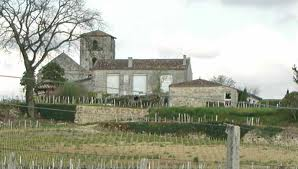 Chateau
Clerc Milon is part of the Rothschild properties in Pauillac, which also
include the famous Mouton-Rothschild. It was ranked a fifth growth in the 1855
classification but many regarded it as an over-achiever nowadays.
Chateau
Clerc Milon is part of the Rothschild properties in Pauillac, which also
include the famous Mouton-Rothschild. It was ranked a fifth growth in the 1855
classification but many regarded it as an over-achiever nowadays.
The
history started in the small village of Milon in the north-western corner of
Pauillac. In the 19th century it belonged to Jean-Baptiste Clerc,
who was still in charge during the 1855 classification. Jean-Baptiste later sold
part of the vineyards to Lamena, who in turn sold to a colleague called Jacques
Mondon.
When
Jean-Baptiste died, his remaining vineyards were inherited by two ladies,
Germain and Clerc, his sister and widow respectively. Jacques then mounted a
legal challenge for the right to use the name Clerc-Milon, which he succeeded
and allowing him to name his part of the original vineyard Clerc-Milon, and
grew into the current estate.
 The
estate went through a succession of owners and fell into disrepair. By 1960 it
was in the hands of a local lawyer Jean-Jacques Vialard, but the vineyards had
already reduced to only 15 hectares. His inheritors soon decided to sell to
Baron Philippe de Rothschild, at a bargain price of one million francs.
The
estate went through a succession of owners and fell into disrepair. By 1960 it
was in the hands of a local lawyer Jean-Jacques Vialard, but the vineyards had
already reduced to only 15 hectares. His inheritors soon decided to sell to
Baron Philippe de Rothschild, at a bargain price of one million francs.
After
Baron Philippe, there was extensive investment and radical change, with the
winemaking facilities renovated in 1970s, installation of stainless steel vats
and increase in the proportion of new oak in the cellar. Quality improved and
with no chateau to grace the label, Baron Philippe decided to adopt the image
of a Jungfraubecher, a silver-gilt marriage cup.
Only in
1982 was the label replaced by the pair of dancing clowns fashioned from
precious stones, another piece of art from a German goldsmith. The piece of art
is now in the private museum of the family. There is also a new investment
recently, a modern winery constructed near Mouton, which was unveiled in the
2011 Vinexpo.
 The new
facility allows the wines to be made closer to the vines, with new equipment in
a more spacious building, and modern technology such as optical sorting Also,
it is now under a dedicated technical team instead of sharing with that from
Mouton.
The new
facility allows the wines to be made closer to the vines, with new equipment in
a more spacious building, and modern technology such as optical sorting Also,
it is now under a dedicated technical team instead of sharing with that from
Mouton.
There
are over 100 separate vineyard plots, scattered around Milon and the new
cellars. The soils are a mixture of sandy gravel with a deeper seam of
clay-limestone. In 2011 there was 40 hectares in full production, with another
5 hectares added afterwards. Planted with 49% Cabernet Sauvignon, 36% Merlot,
12% Cabernet Franc, 2% Petit Verdot and 1% Carmenere, a rarity in Medoc despite
used to be popular in the old times. The vine averages 53 years of age.
 With
manual harvesting, the berries are picked in several tries into small baskets. Manually
sorting was done twice, before the grapes are moved into the winery, prior to
getting an optical scanning. The must is fermented in stainless steel vats,
with temperature control, before aged in new oak barrels (30%) for 14-18 months.
About 14000 cases of grand vin is made but there is no second wine.
With
manual harvesting, the berries are picked in several tries into small baskets. Manually
sorting was done twice, before the grapes are moved into the winery, prior to
getting an optical scanning. The must is fermented in stainless steel vats,
with temperature control, before aged in new oak barrels (30%) for 14-18 months.
About 14000 cases of grand vin is made but there is no second wine.I have recently tasted the 1998 and 2004 vintage. Below is my tasting note for the 2004 one:
 Good quality Pauillac of deep ruby color, the wine has a fairly intense nose showing good complexity and developing aromas of black cherry and blackcurrant, iris, liquorice, cedar, cocoa and chocolate, meaty. Fairly high in acidity, the tannin is fairly strong but also a bit gripping, which probably requires more time to soften. Fairly full-bodied, the palate is reasonably intense with black cherry, vanilla and cedar, liquorice, cocoa, and having a reasonably long finish. It is ready to drink now but can benefit from further ageing of another 3-5 years.
Good quality Pauillac of deep ruby color, the wine has a fairly intense nose showing good complexity and developing aromas of black cherry and blackcurrant, iris, liquorice, cedar, cocoa and chocolate, meaty. Fairly high in acidity, the tannin is fairly strong but also a bit gripping, which probably requires more time to soften. Fairly full-bodied, the palate is reasonably intense with black cherry, vanilla and cedar, liquorice, cocoa, and having a reasonably long finish. It is ready to drink now but can benefit from further ageing of another 3-5 years.










































